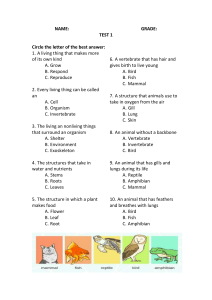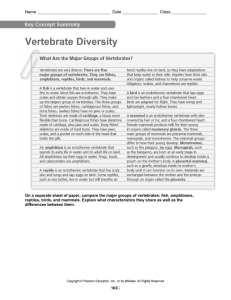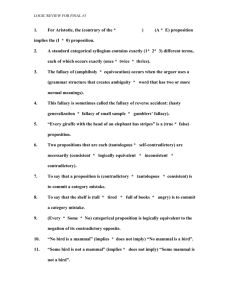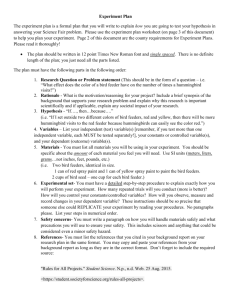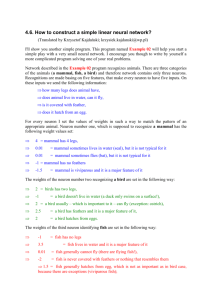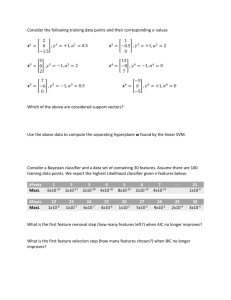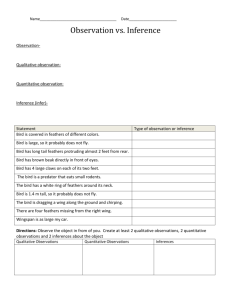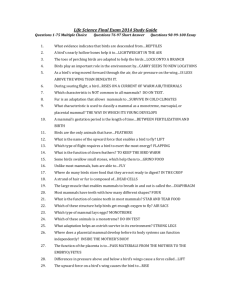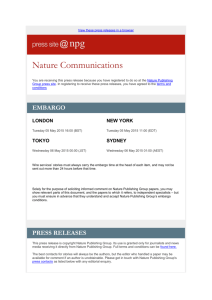BIO300 Museum Techniques
advertisement
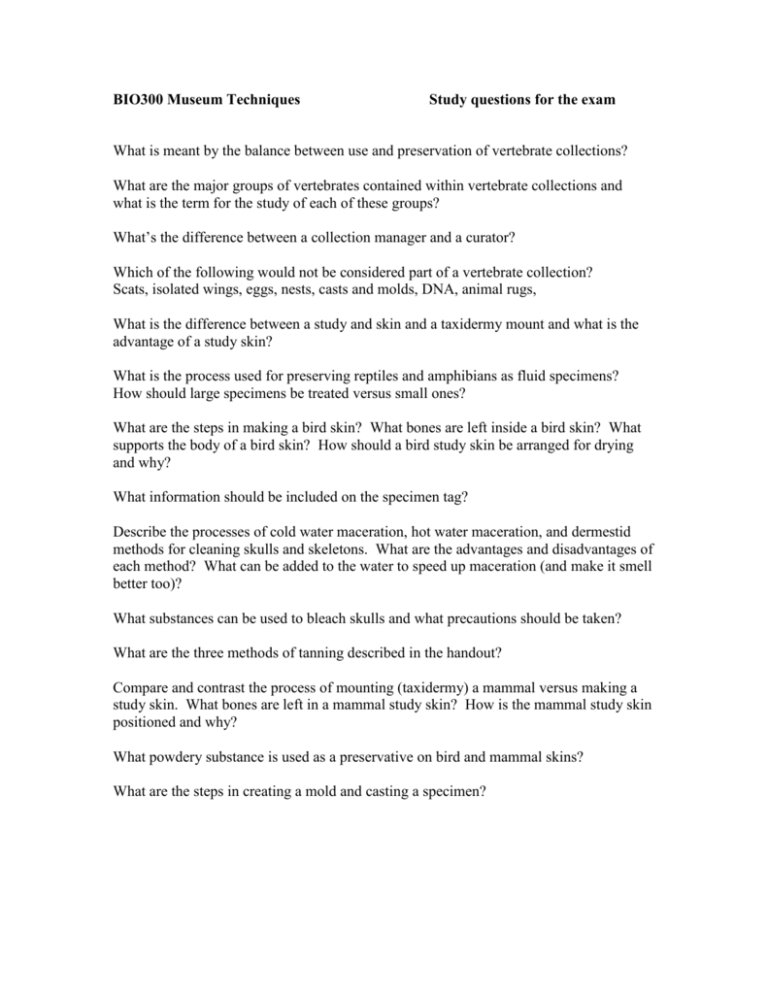
BIO300 Museum Techniques Study questions for the exam What is meant by the balance between use and preservation of vertebrate collections? What are the major groups of vertebrates contained within vertebrate collections and what is the term for the study of each of these groups? What’s the difference between a collection manager and a curator? Which of the following would not be considered part of a vertebrate collection? Scats, isolated wings, eggs, nests, casts and molds, DNA, animal rugs, What is the difference between a study and skin and a taxidermy mount and what is the advantage of a study skin? What is the process used for preserving reptiles and amphibians as fluid specimens? How should large specimens be treated versus small ones? What are the steps in making a bird skin? What bones are left inside a bird skin? What supports the body of a bird skin? How should a bird study skin be arranged for drying and why? What information should be included on the specimen tag? Describe the processes of cold water maceration, hot water maceration, and dermestid methods for cleaning skulls and skeletons. What are the advantages and disadvantages of each method? What can be added to the water to speed up maceration (and make it smell better too)? What substances can be used to bleach skulls and what precautions should be taken? What are the three methods of tanning described in the handout? Compare and contrast the process of mounting (taxidermy) a mammal versus making a study skin. What bones are left in a mammal study skin? How is the mammal study skin positioned and why? What powdery substance is used as a preservative on bird and mammal skins? What are the steps in creating a mold and casting a specimen?
